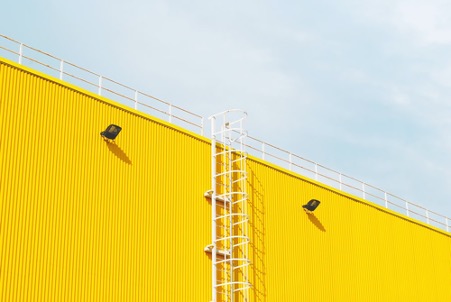A roof is perhaps the most important facet of any building. Think about it. It protects the people and possessions inside from elements such as rain, wind, snow and hail. In addition, a strong solid roof also protects the building occupants from dust and other flying debris.
The roof, like every other part of your commercial building, needs constant maintenance to ensure it stays in tip-top shape. Maintenance requires contractors to work on top or around the edges of the roof. Needless to say, this can be dangerous if there aren’t roof walkways in place.
What exactly are roof walkways? And how do they benefit you as the owner of a commercial building? Let’s have a look at a few of the top reasons you should have a roof walkway installed as soon as possible.
What Exactly is a Roof Walkway?
Essentially, a roof walkway provides a safe, non-slip level walking surface for any workman who needs to access the roof or surrounding areas during the course of their work. Roof walkways provide a determined pathway for the worker to get from one point to another without injury.
4 Reasons Why You Need a Roof Walkway
Some people might argue that it isn’t really necessary for a commercial building to have a designated roof walkway because it isn’t something that’s used all the time. So, is it feasible to invest in an expense item that may only be used a few times in the building’s lifetime? There are actually a few reasons you should have one installed. Take a look at them below.
Regulated Roof Safety
Recent statistics show that an average of 14% of workers is injured as a result of falling. Injuries caused by falls at work can result from falling from ladders leaning against buildings to work on rooftops or from the actual rooftops. For this reason, legislation dictates that fall protection is required for any work done from two meters upwards.
Roof walkways can be installed to eliminate trip and fall hazards for anyone requiring safe access to your commercial building’s roof. This could refer to work that needs to be done on your roof as well as any premises that uses your roof as the main access point.
Minimises Liability Risk
As a commercial property owner, there’s always the risk of litigation for one of many reasons. One of those reasons can easily be legal action taken against you as a result of an injury on your premises. Allowing contractors to work on your roof, even for the smallest repair, puts you at great risk.
Should the worker fall off the roof or get injured as a result of the absence of roof walkways, you could be held personally liable. It’s important to regard your roof as a work surface that will at some point have people working and walking on it.
Improves Roof Longevity
Working on a rooftop without walkways puts a tremendous amount of stress on the external roof membrane. Without walkways, the roof will bear the weight of workers, heavy machinery and other supplies.
Unnecessary weight all over the roof will damage the membrane and roof tiles. This will lead to thousands of dollars in repair costs. With a specified roof walkway made of gatorgrate grating, the area that receives foot traffic is greatly reduced. Roof walkways provide a single path across or around the roof that will keep the workers safe and keep tools off the rest of your roof.
Improve Access to Pipes and Plumbing
Depending on the structure of your building the only access to repair a particular problem might be through the roof. Alternatively, the closest point to reaching plumbing pipes might be on top of the roof’s structure. Having workers trying to crawl up and under pipes could not only cause damage to the roof but to the pipes as well.
Roof walkways make it easy for workers to reach the pipes, equipment or any other object that needs repairing. Having handrails on the walkways also gives the workers something stable to hold onto while they complete their work. This will prevent pipes from getting damaged because workers use rails for support instead of other roof components.
Conclusion
The buzz term in the roofing industry these days is “safety solutions”. Aside from the government legislations, some employers and repair company owners are refusing to take on jobs where the work area is not safe. This includes rooftops without walkways, railings or necessary stairs.
Your rooftop is an expensive part of your building. Investing in a quality roof walkway system will give workers the easy access they need to perform their duties, while protecting your investment. So protect your roof and the people working on it with one simple feature.

